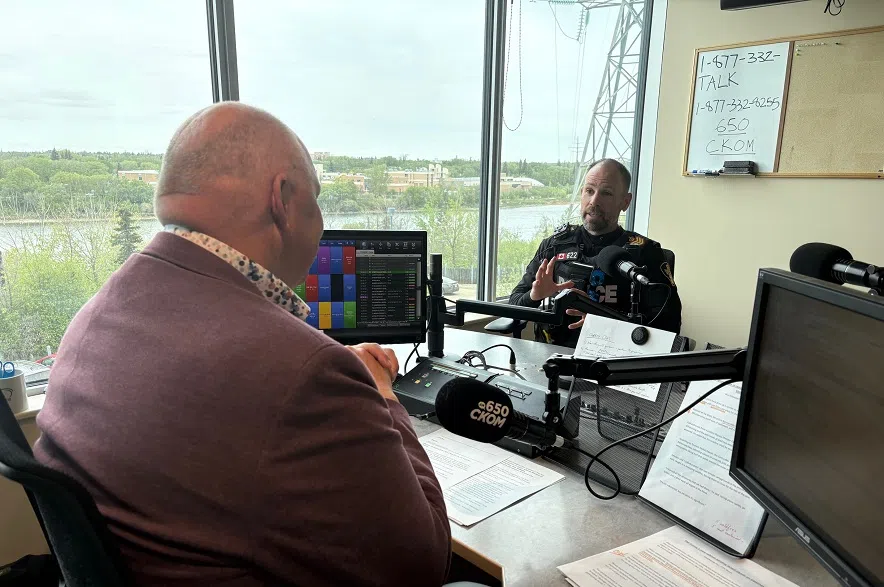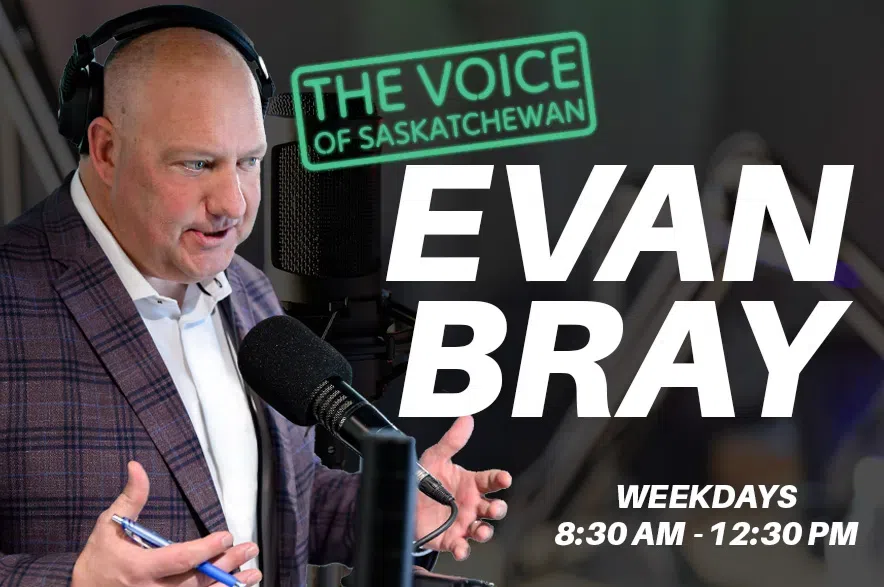As the city grapples with an opioid crisis, Chris Harris, a sergeant with the Saskatoon Police Service, joined the Evan Bray Show on Thursday to discuss what police officers are seeing as they respond to overdose calls.
Saskatoon recently saw 30 overdoses in a three-day period, prompting a warning from the Saskatchewan Ministry of Health.
Read More:
- Saskatoon sees 30 overdoses in three days, prompting health ministry warning
- Union says drug overdoses a daily occurrence on Saskatoon city buses
- ‘Overwhelming’: Saskatoon drugs crisis far reaching with deaths and hundreds of calls
Listen to the full interview with Harris, or read the transcript below:
The following questions and answers have been edited for length and clarity.
EVAN BRAY: The drug problem has been here for a while, and what we’re dubbing as the overdose crisis is really a direct result of the types of drugs that they’re doing. Fentanyl and other derivatives of that are causing overdoses. Tell me how often this is happening.
CHRIS HARRIS: There’s multiple calls a day. At the start of my shift yesterday morning, right outside City Hall there was an individual that was in distress that we just came upon, and nobody saw him. A lot of these times we are just stumbling upon these people.
In the last two weeks I was riding around at two o’clock in the morning, and on Fourth Avenue I saw somebody that was kind of leaning up against a building. It looked like they could be sleeping, but it’s not a spot where somebody would sleep, even if they were unhoused.
I checked on them to make sure they’re at least okay, and they weren’t, so Narcan was administered.
How do you know they’re overdosing? What are the signs you look for? And walk me through what you actually do.
HARRIS: They’re conscious and they’re breathing lots of times. It appears almost as they’re in a deep sleep. They’re snoring, but I think they’re basically trying to get air.
They’re not very compliant to pain stimulus, and have kind of a weak pulse, but it’s there.
Is there a downside to administering Narcan if they haven’t overdosed?
HARRIS: There is no downside to administering it. If I feel that they’re not just simply intoxicated, I will take the next step, and I’ll automatically get Medavie on the way to assist them.
Lots of times they still have paraphernalia with them. They might have a pipe in one hand and a lighter in the other – that’s how fast these overdoses can occur. Before the high has even hit them, they’re already in the throes of an overdose.
I’ve talked with our premier on this show about the notion of a secure treatment facility. Do you think that would make a difference?
HARRIS: As an officer – not as a representative of the Saskatoon Police Service – I agree 100 per cent. What we’re doing right now isn’t working, so let’s try something different.
If you make it all encompassing, where you have wraparound services in one facility, where you have mental health and addiction treatment, it can help with psychological and the medical needs that these people desire. It’s all under one roof, and you can transition them to other housing slowly.
I don’t understand what the harm is in trying these things, and without getting too deep down the rabbit hole I know one of the reasons against it is that it impedes people’s civil liberties or it’s involuntary, but you’re also talking about people who have kind of lost the ability to make these decisions on their own.
Conversations are no different than placing somebody who’s intoxicated in public under arrest and taking care of them and finding them a place. Whether it’s cells or a detox facility, they’ve lost the ability to make conscious decisions for themselves, so we are forced to intervene and make decisions on their behalf until they’re stable enough to make those decisions for themselves.











